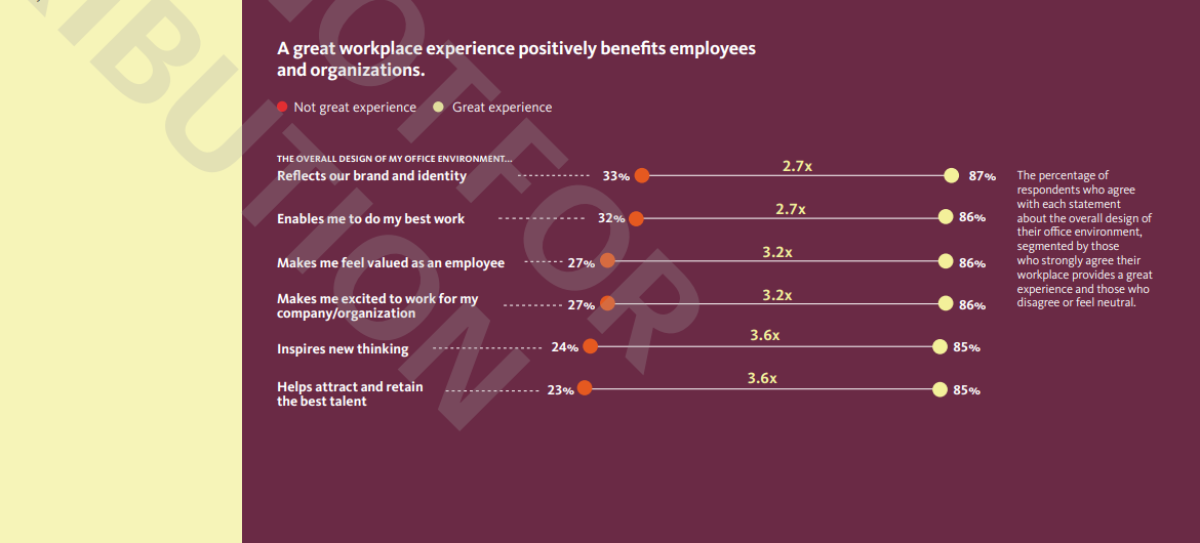-
Retired couple lured to sea and thrown overboard - 9 mins ago
-
Hurricane Barbara: Live Tracker Maps - 19 mins ago
-
Take Friday off – CBS News - 26 mins ago
-
2025 Belmont Stakes Mini-Movie | FOX Sports - 39 mins ago
-
See Gizmo fly! Second Big Bear eaglet has flown the nest - 41 mins ago
-
They said she took her own life. But her mom said it didn’t add up. - 53 mins ago
-
NY Giants Free Agent Target Will Meet With NFC Team - 60 mins ago
-
California Gov. Gavin Newsom is floating a federal tax boycott. Here’s what to know. - about 1 hour ago
-
Judge dismisses Justin Baldoni’s countersuit against Blake Lively, Ryan Reynolds - about 1 hour ago
-
Aaron Rodgers ‘not as interesting as he used to be’, Is he still an elite QB? | The Herd - about 1 hour ago
Office Attendance Is Rising but Slowly, and a Lot Has Changed
The intensity of the “RTO debate” seems to have cooled as perhaps a new normal sets in. Even though attendance in the office is crawling up, that growth is slowing, and the entire paradigm of how companies use their spaces and to what ends has evolved greatly.
While remote work continues to expand broadly, those dreaming of a fully remote future have been upended by some core realities: people are coming back to the office and, in the right circumstances, workers of all ages and levels value some office time. Regardless of their experience, role, function, geography or personal responsibilities, employees are eager to explore opportunities for greater autonomy and flexibility, and their time in the office needs to count.
“Largely, we see companies enjoying a hybrid approach of two or three days a week in the office, where employees can collaborate and learn together, while giving workers some flexibility,” Kate Duchene, CEO of the HR consulting firm RGP, previously told Newsweek. “If an organization does want employees to spend more time in the physical office, workers need to feel like it is an open and safe space for positive interactions with their peers and that they are having meaningful, purpose-led collaboration that is furthering their work.”
It’s not back to 100 percent, it probably never will be, but weekly average attendance in Class A buildings, those with high-end, recent constructions and modern amenities, typically occupied by major companies and professional services firms, is at 74.8 percent over the last four weeks in the 10 largest U.S. metro areas, according to building security company Kastle Systems’ latest office attendance data. On Tuesdays, the most popular day for people to go in, that figure is up to 92.1 percent.
Kastle reports that the national average peak day attendance is 62.2 percent, with Chicago, New York City and three Texas cities (Dallas, Houston, Austin) running above average. The national average was under 60 percent at the same time of year in Kastle’s 2023 reporting.
“We’ve seen it increasing steadily, but it hasn’t been huge,” Janet Pogue McLaurin, global director of workplace research at the architecture and design firm Gensler, told Newsweek.
Across the workforce, office attendance has been tied to performance reviews and bonuses, while law firms, financial services firms and the tech industry have been announcing attendance mandates. The federal government is also implementing an expansive return-to-office mandate.
While it may seem that the remote era is over—the Flex Index reports that office policy changes to “full time in office” increased from 13 percent to 24 percent in the Fortune 500—the reality is a new normal has set in, and flexibility is still on the rise. The segment of companies identifying as hybrid has grown to 43 percent of Fortune 500 firms, while 24 percent are fully remote or allow employees to choose.
“I often hear ‘Work from home is over’ or ‘Everyone is returning to the office’: That’s not true,” Nick Bloom, a Stanford economist who rose into prominence in part due to his studies on remote work well before the COVID-19 pandemic, wrote on LinkedIn. “The data shows *The Return to Office* is Over.” He cites office cost savings and ease in recruiting and retention among the value drivers for businesses to keep operating in a more flexible manner.
So, people are coming back to the office, but the rise has been slow, and a lot has changed, including what the offices look like and what people are doing there. Leading organizations are getting better at using the office as a place for collaboration and activities, while maintaining flexible attendance policies.
“Employers are investing in ‘special events’ (e.g., external speakers, cooking demonstrations, etc.) to incentivize returning to the office, with a need for suitable spaces to support these events; 43% of employers have these in place,” a paper by the commercial real estate firm JLL reported in February.
Many companies are reconfiguring their locations and spaces. The fact that attendance is rising does not change employees’ interest in flexibility and autonomy.
“Our work days vary tremendously,” McLaurin said. “When we think about what employees really want, [it’s] access to spaces and the agency to create their ideal work experience.”
As companies leverage their office space to play a role in recruiting, retention and productivity, they may be encouraged by the finding from Gensler that on a holistic level, the office needs of employees do not have significant variance across generations.
“We found that there was very little variance in the ideal work experience that people wanted. It was pretty much all the same at all ages, which is really surprising,” she said. “We did not see that the young generation really wants something uniquely different than what everybody wants.”
Different Places and Spaces
In the 2019 version of the office, the majority of the space was for cubicles or desks; perhaps some senior leaders occupied offices, and McLaurin noted that the only other type of space was typically conference rooms of various sizes.
Today, a new mix of spaces occupy offices, including cafés, collaboration hubs and tech-equipped conference rooms, along with an emphasis on using outdoor space. A recent study from Gensler found that beyond desks and meeting rooms, workers prioritize the following amenities most: café or food hall, coworking area, lounges and nap rooms.
“It used to be that we considered those amenities,” McLaurin said. “They were the additive cherry-on-the-top kind of spaces. But now we see that amenities are no longer optional. They’re really an important component of creating a great workplace experience.”
A company’s office presence, including the buildings and different cities they are located in, has always had an importance to company strategy. Typically, offices are opened to be accessible for clients, suppliers and employees, and, for a long time, companies have thought about how to equip their headquarters with amenities to keep employees happy, such as the watercooler, snacks or a gym.
JLL’s authors also noted that “the number of organizations reporting that they have a dedicated community or workplace experience manager on-site has risen from 23 percent to 35 percent in the past year.”
For companies looking to promote productivity in the workspace, Gensler identified seven main ways of working in the office and then mapped out which office amenities or features contributed best to that type of work.

Gensler

Gensler
The researchers then identified which positive impacts can be credited to the office environment, finding the strongest ties were to company brand and identity, enabling people to do their best work, making people feel valued and excited to work for the company, inspiring new thinking and attracting and retaining talent.
Employees also care about the environment surrounding the office, which may explain why some companies, like IBM and Marriott, have opened urban, public transport-accessible offices in vibrant neighborhoods, after spending decades in sprawling suburban campuses.

Gensler
“When we’re working with clients, we hear two things,” McLaurin said. “One is, Where is that talent and where does that talent want to be located? The other is, Where’s our client and customer, and how do we stay close to that client and customer?”
Those companies mentioned a desire to attract employees to that shiny new office with the help of the neighborhood—replete with walkable options for lunch, a coffee or maybe getting an errand done—as part of the attraction.
“All those spaces play an important role,” McLaurin said. “We have seen outside of coffee shops and restaurants, outdoor spaces is number three [among employee interests]. Right after it is medical help, then grocery store, shopping, retail and pharmacy. … So location matters as well as the type of building that you’re located in.”
Source link




























